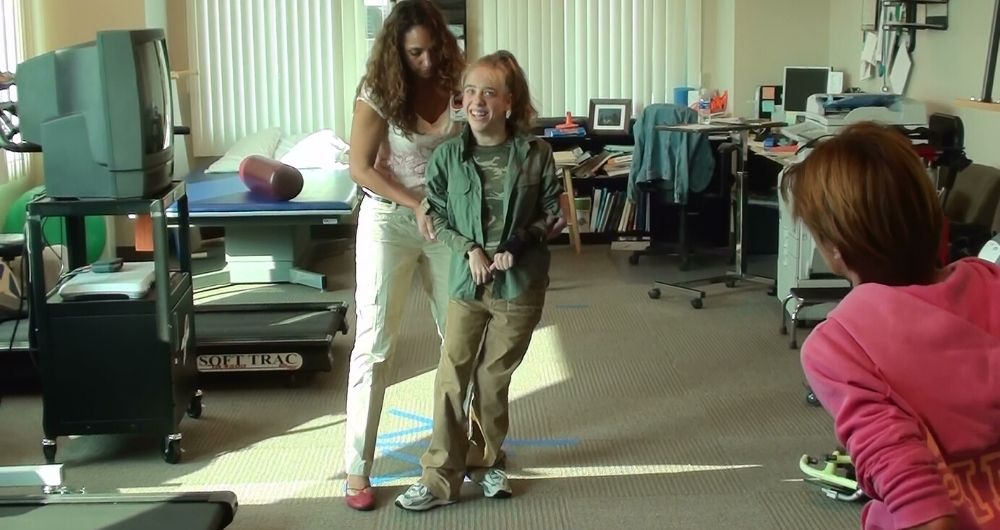Janice Kashimba watched in shocked disbelief as her 32-year-old daughter Tracey Kashimba took a few steps on her own for the first time in her life. Tracey was leaning on a walker, but she was taking these first steps by herself and grinning ear to ear with delight. Janice immediately called her husband and family to notify them of the exciting news.
“It was like, 'Oh my gosh!'” Janice said of the moment. “I've tried to help Tracey walk before, but I've always had to hold her up.”
The miracle moment happened at the Central California Neuroscience Institute at Community Regional Medical Center. Dr. Jeffrey Rosenfeld, chief of neurology, said the unique combination of subspecialty medical experts, various occupational, physical and speech therapists and nutritionists and UCSF Fresno faculty collaborating all under one roof make such breakthroughs possible.
Tracey has cerebral palsy, a condition caused by injuries or abnormalities of the brain that can affect nervous system functions such as movement, learning, hearing, seeing and thinking. She was diagnosed with cerebral palsy just three months after birth.
“It was really difficult,” said Janice. “Growing up, she couldn't play with toys. I often read novels aloud to her instead.”
When Tracey and Janice moved from Florida to California just four years ago, they hoped to find a reliable doctor who listened and provided great care to Tracey near their home in Clovis.
When a friend told them about the Neuroscience Institute at Community Regional, they were excited to give it a try.
“I wonder how many doctors Tracey saw over the years that never saw the potential in her,” Dr. Rosenfeld said. “This environment was the key to Tracey's success.”
Tracey originally came to the center for assistance with a baclofen pump, a programmable, battery powered medical device that is surgically placed in the abdomen to store and deliver a medicine for muscle symptoms like spasm, pain and stiffness.
After assisting Tracey with the pump, Dr. Rosenfeld recommended LiteGait, a gait training device that simultaneously controls weight bearing, posture, and balance over a treadmill or over ground. It is used to treat patients with a wide range of impairments and functional levels, such as cerebral palsy.
Physical therapist Kim Voelz worked closely with Janice and Tracey, teaching them exercises to help Tracey control her trunk and – eventually – walk with minimal assistance. They began with short 2 to 3-minute long sessions on LiteGait, but with time, Tracey was able to sustain up to 20 minutes on the equipment, “which was really good,” said Voelz.
Kim then decided to move her therapy to solid ground without the equipment. Tracey appeared to be making great improvement, and after about 12 visits, was walking with minimal assistance and eventually managed to take a few steps by herself. Although Janice couldn't believe it when she saw it, Kim wasn't shocked.
“I knew that Tracey had it in her,” she said. “It made me feel good to see her walk and it reminded me of why I became a therapist.”
Tracey continues to do exercises to improve her walking. She takes part in activities she has always enjoyed, such as hanging out with friends and learning about psychology. She currently holds a tutoring position teaching math and reading to kids with learning disorders.
“Their ability, knowledge and caring is great,” Janice said of her experience with the Neuroscience Institute at Community Regional. “It was such a pleasure to work with them and we are so thankful to have come across the neuroscience center.”
This story was reported by Esteban Cortez. He can be reached at MedWatchToday@communitymedical.org.



